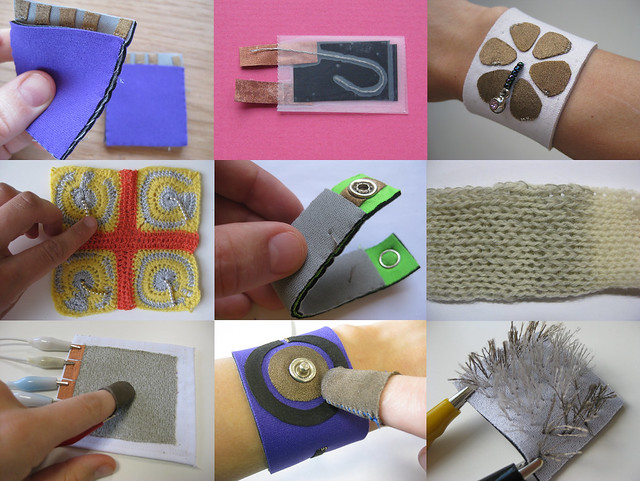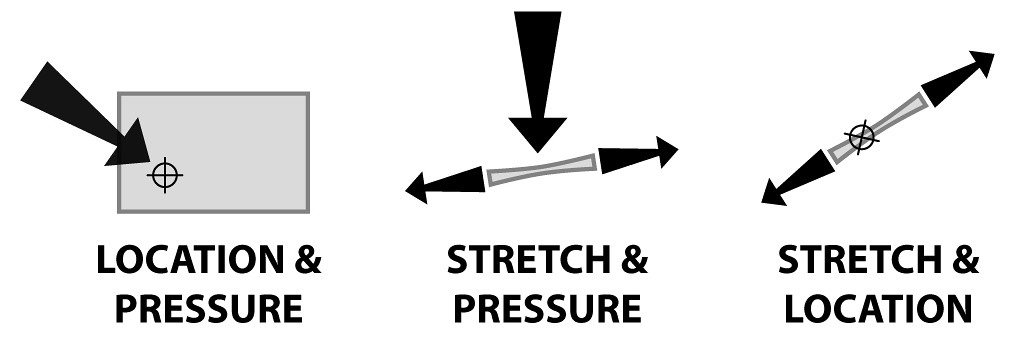Sensors: Unterschied zwischen den Versionen
| Zeile 20: | Zeile 20: | ||
https://c1.staticflickr.com/3/2609/3913814914_950c4594c8_z.jpg | https://c1.staticflickr.com/3/2609/3913814914_950c4594c8_z.jpg | ||
=== | ===Resistive Textile Sensors=== | ||
>> https://www.kobakant.at/DIY/?p=5689 | >> https://www.kobakant.at/DIY/?p=5689 | ||
Version vom 26. Mai 2020, 23:03 Uhr
A sensor is an electronic component that translates physical states of the world into electronic signals that can then be read by a computer. They are INPUTS to a computer so it can know about the world. Like the keys on your keyboard, the optical tracking of your mouse. A light switch. A volume knob.
All the Sensors
Wikipedia (of course) has a lovely long list of all the sensors that ever existed: https://en.wikipedia.org/wiki/List_of_sensors
Overview of Sensors at S&&O
For getting started with sensors, here an illustrated overview with a selection of common sensors that we have at S&&O, with an attempt to organize/categorize them in some way. To find out more about each sensor, simply search it's name on Wikipedia or the Internet.
Textile Sensors
>> https://www.howtogetwhatyouwant.at/?cat=26

Resistive Textile Sensors
>> https://www.kobakant.at/DIY/?p=5689 >> https://www.flickr.com/photos/plusea/albums/72157655522369478



Sensor KITs
There are many sensor kits you can buy where the raw component sensors are often mounted on breakout boards for easier, more robust access to their leads (legs) but also sometimes with extra components (resistors, capacitors, leds) on them to make the raw sensor components even easier to use.
